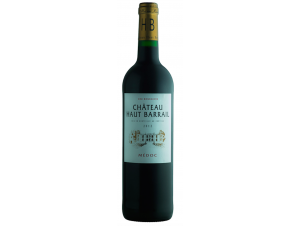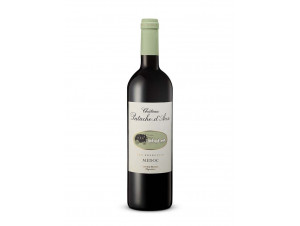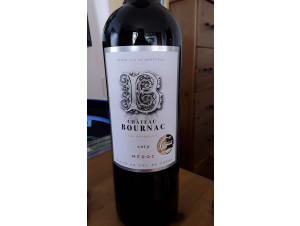You have no items in your shopping cart.
Wine Médoc
The Médoc vineyard is bounded by the Jalle de Blanquefort, north of Bordeaux, the Pointe de Grave, the Gironde estuary and the Landes forest. It is an area of no less than 50 km on the north-south axis and 15 km in width. It is commonly called Bas-Médoc, and is located to the north of the Haut-Médoc appellation. Read more on Médoc
-
Top Selling
-
Top Selling
-
Top Selling
- -21%
- -26%
- -25%
- -25%
Appellation Médoc
The Médoc is a vineyard born from the draining of marshes
It was the Romans who gave its name to the Médoc appellation, "in medio aquae", whose territory lies between the Atlantic Ocean and the Gironde estuary. The area is mainly made up of marshland, used for forestry and livestock. In the early 17th century, Henri IV hired technicians from the Netherlands to drain the marshes and increase the agricultural area. The Bordeaux wine merchants soon realised that this territory was similar to the gravelly hilltops where the Wine of Bordeaux is produced.
Thus, it was representatives of this profession, some of them Anglo-Saxon, who financed the work of draining the land. Many châteaux in the area have Anglo-Saxon sounding names for this reason: Cantenac-Brown, Clarke, Dillon, Kirwan, Léoville-Barton, Lynch-Bages, Mac-Carthy, Palmer... The cabernet-sauvignon was planted during the 18th century.
Two official classifications exist for Médoc wines: the historical classification established in 1855 by Napoleon III, which groups together the red wines and the mellow wines of Sauternes and Barsac and a more recent classification, dating from 1932, devoted to the crus bourgeois du Médoc. It exclusively concerns red wines.
The Médoc AOC rests on land saved from the waters
Médoc is a region of Bordeaux associated with the great wines of Bordeaux. The 5800 hectare appellation area is located on a strip of land close to the estuary, largely covered by forests and marshes. It occupies the northern part of the peninsula, the southern part being reserved for the Haut-Médoc appellation. The best lands of the appellation are those which were drained by the Dutch engineers in the 17th century.
These gravelly hilly landscapes called croupes are delimited by jalles (streams that drain the soils of the gravelly croups towards the Gironde) and marshes. Covered by very thick Garonne and Pyrenean gravel, the croups are the result of the erosion of sedimentary plateaus during the installation of the Garonne and Gironde river beds, and of small streams during the ice ages. In short, the vineyards are established on the alluvial terraces created by the erosion of the left bank of the Garonne, from Blanquefort to the Bec d'Ambès and those of the left bank of the Gironde from the Bec d'Ambès to Saint-Vivien-de-Médoc.
Located between the Atlantic Ocean and the Gironde, the Médoc vineyards are exposed to a temperate oceanic climate, mild and humid. The vineyards are protected from the winds of the Aquitaine coast by the Landes forest. A large quantity of water vapour is released by the Atlantic Ocean, the Gironde estuary and the Landes forest, which allows for a regulation of the temperature range.
The cabernet-sauvignon is the predominant grape variety in the assemblages of the Médoc, at 54%, followed by merlot at 40%, cabernet franc at 5% and petit verdot at 1%. White grape varieties occupy 70 ha, less than 1% of the vineyard. The appellation produces around 290,000 hectolitres per year.
Medoc wines improve with age
Médoc wines have a ruby colour that is very dark and can evolve into purple or garnet over time. Wines made from gravel are powerful and full-bodied. They can be tannic in their youth and benefit from waiting 5 to 10 years. Those born on chalky-clay soils are fine, elegant and subtle and can be enjoyed young, between three and four years of age, while possessing good keeping potential, from six to ten years.
The nose offers a variety of aromas ranging from red fruits, candied fruits, dried fruits to gourmet notes of chocolate jam and cocoa that can evolve into spicy, toasty and roasted flavours. The mouth of the Médoc is well-structured, full, with a framework of tasty tannins, fine, but well present. The finish is long, full, with notes of undergrowth and liquorice.
The Medoc goes extremely well with foie gras dishes and game, but it also works wonderfully with poultry and cheese.
What are the great vintages in the Médoc?
The Médoc appellation can boast a string of exceptional years over the past two decades. The year 2005 was crowned millennium vintage and 2009, vintage of the century. Since the beginning of the century, there has been a succession of very good years, with great vintages in 2003, 2006, 2008, 2010 and an exceptional vintage in 2000.
There are many crus bourgeois in the Médoc vineyards
.Château La Tour de By
Located in the north of the Médoc appellation, La Tour de By is a very old estate. Among its owners, we can mention Pierre Tizon, lord of the fief of By in the 16th century, Count Louis de Gramont in the 18th century, Monsieur de Lignac, and then his son-in-law Alfred Rubichon, who had the present château built in 1876, close to the Tour de By. It is a small lighthouse built in 1825 to guide ships in the estuary and which will give its name to the current estate. In 1965, Marc Pagès, an agricultural engineer, bought the abandoned estate and rebuilt it. Since his death in 2007, his grandson, Frédéric Le Clerc, has been in charge. Classified cru bourgeois supérieur since 1932, La Tour de By was classified cru bourgeois exceptionnel in 2003.Château Labadie
This Bordeaux château is located in Begadan. The wine estate was bought in 1970 by Yves Bibey, who has continued to expand it since then, until he now has a vineyard of nearly 50 hectares. With respect for tradition, driven by passion since the beginning of his career, he perpetuates the wine-making know-how of the region while constantly modernising his equipment. He uses integrated pest management, in order to optimise the quality of his grapes. The winery work is carried out with respect for tradition, but with very innovative temperature regulation techniques. It was classified cru bourgeois in 1932 and awarded for its 2011 vintage at the final of the Coupe des crus bourgeois du Médoc.Château Blaignan
Château Blaignan is located in the commune of the same name. It is one of the largest vineyards in the region, comprising no less than 100 hectares, and vines have been grown there since the 14th century. The company CA Grands Crus du Crédit Agricole has owned it since 2004. Around 2010, the vineyard was bought by Anne Le Naour and Jean-Jacques Lapeyre who launched a major plan to optimise the vineyard. The latter have implemented the use of integrated pest management and have invested, among other things, in harvesting machines that allow a finer selection of grapes. The new vat room has a capacity of 8000 hectolitres and the vats are extremely precisely thermo-regulated. Denis Dubourdieu was in charge of supervising the work. The estate has been classified cru bourgeois since 1932. The latest great vintages to date, 2016 and 2018, attest to the growing prosperity of the estate.
Bordeaux appellations
Côtes-de-Bordeaux-Saint-Macaire
Moulis-en-Médoc




































 TWIL - Achat de Vin
TWIL - Achat de Vin


